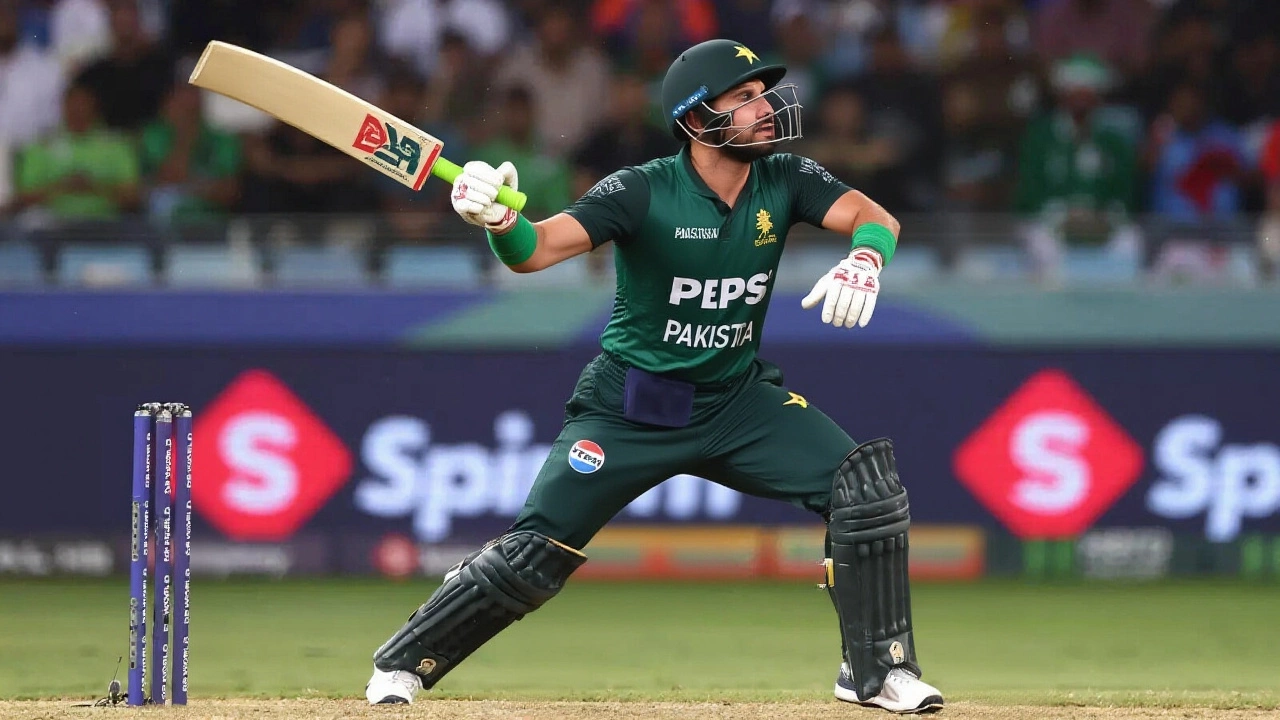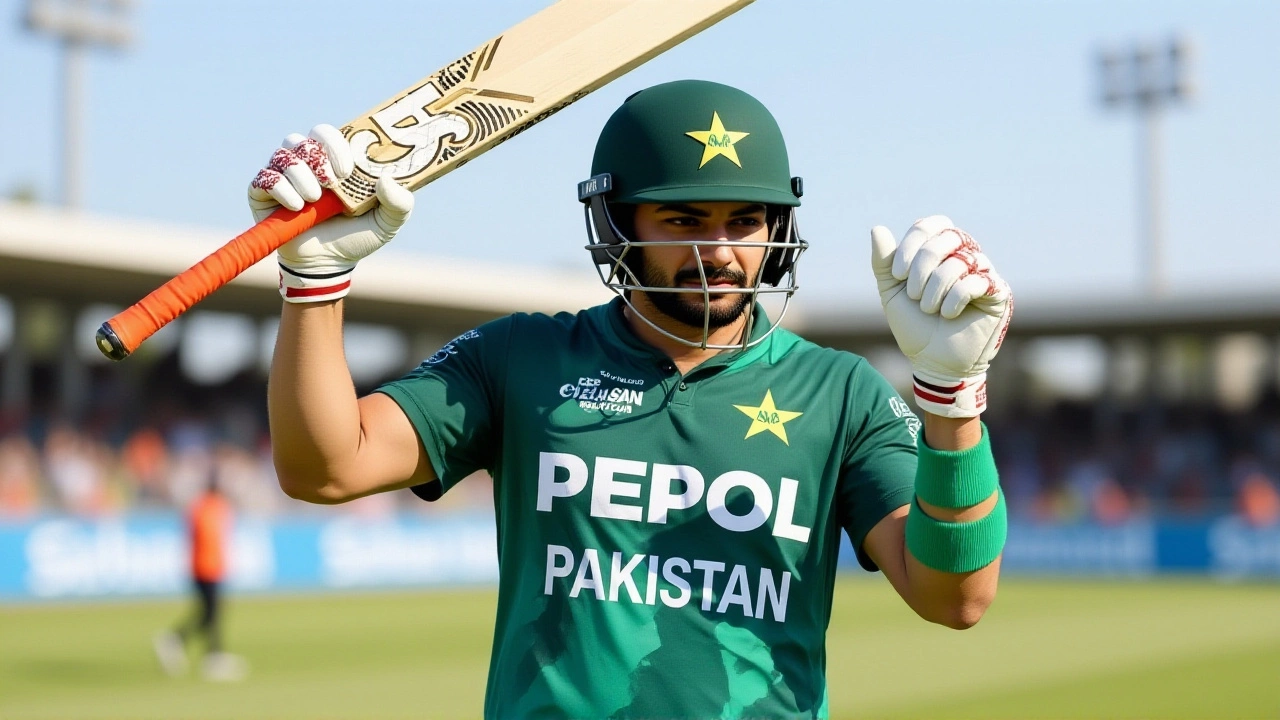When Sahibzada Farhan stepped onto the pitch in Dubai on September 21, 2025, few expected his innings of 58 against India to become the cornerstone of Pakistan’s most explosive T20I total ever against their arch-rivals. But there it was — 171 for 5, a new benchmark in a rivalry defined by heartbreak and heroics. Farhan’s knock wasn’t just about runs; it was a statement. In a tournament where consistency trumped flash, he delivered seven fifties in eight matches — a feat no Pakistani had ever matched in a single Asia Cup. And yet, as the final whistle blew at the Dubai International Cricket Stadium on September 28, 2025, it was India who lifted the trophy, chasing down 172 with two balls to spare. The twist? Farhan’s brilliance was the brightest light in a darkening tunnel for Pakistan’s campaign.
Record-Breaking Consistency in the Face of Rivalry
Farhan’s seven fifties in Asia Cup 2025 tied him with India’s Abhishek Sharma and Tilak Varma, but his 217 runs came at a strike rate of 142.6 — faster than both. While Sharma amassed 314 runs, Farhan’s average of 31.0 across those seven half-centuries revealed a batsman who turned pressure into production. His 58 against India wasn’t a blitz — it was a masterclass in control. Facing a disciplined Indian attack led by Rahul Dube, who claimed 2 for 33, Farhan anchored the innings with 10 boundaries and just two sixes. He didn’t try to overpower; he out-thought.That innings was no outlier. In the tri-nation warm-up series against Sri Lanka, Farhan smashed an unbeaten 80 off 45 balls — the highest individual score by a Pakistani against Sri Lanka in T20Is, eclipsing Shoaib Malik’s 57 from 2007. Six fours, five sixes, and a calmness that belied his 23 years. His partner in crime? Mohammad Nawaz, who returned 3 for 16 in that same match, earning Player of the Match. Together, they turned a chase of 129 into a statement: Pakistan wasn’t just competitive; they were dangerous.
The Bigger Picture: A Year of Firsts
Farhan’s Asia Cup run was the crescendo of a year unlike any other in his career. By mid-2025, he became the first Pakistani batsman to hit 100 sixes in a single calendar year — a milestone that placed him among global elite. Only Australia’s Karanbir Singh (122 sixes) and West Indies’ Nicholas Pooran (103) hit more. Farhan finished 2025 with 15 fifty-plus scores across all T20 formats — matching Pooran’s tally and trailing only Singh. This wasn’t luck. It was engineering. His back-foot drive, once considered risky, had become a weapon. His ability to rotate strike under pressure, especially in the middle overs, redefined Pakistan’s middle-order strategy.The Pakistan Cricket Board (PCB), headquartered in Lahore, had quietly shifted its focus toward T20 specialists in 2024. Farhan was their flagship investment. His rise coincided with the emergence of a new breed of Pakistani cricketer — technically sound, mentally resilient, and unafraid of the big stage. His captain, Mohammad Rizwan, often praised him as “the quiet assassin.”

India’s Dominance: A Bowling Masterclass
While Farhan dazzled, India’s win was built on a different foundation: bowling. Their attack took a tournament-record 17 wickets in Asia Cup 2025 — the most ever in a single edition. Kuldeep Yadav was the linchpin, snaring four wickets in the final alone. His wrist spin disrupted Pakistan’s rhythm in the powerplay and death overs alike. India’s fielding was sharp, their death bowling precise. In the final, when Pakistan needed 18 off the last two overs, India held firm. Board of Control for Cricket in India (BCCI)’s data analytics team had studied Farhan’s tendencies for months — and they knew when to bring on Kuldeep.It wasn’t just about skill. It was about timing. India’s captain, Rohit Sharma, rotated bowlers like a chess master. They didn’t just contain Farhan — they made him work for every run. And when the final over came, with Pakistan needing 8 off 6, it was Kuldeep who bowled. Farhan, on 58, was caught at deep midwicket. The stadium fell silent. The trophy went to India.
What This Means for Pakistan Cricket
Farhan’s performance didn’t end in defeat. It redefined expectations. For years, Pakistan’s T20 team was seen as inconsistent — explosive one day, collapsing the next. But Farhan’s seven fifties proved they could build. He wasn’t a finisher. He wasn’t a power-hitter. He was a stabilizer — the kind of player who turns 140 into 170. And that’s what Pakistan needs now: players who can anchor, not just explode.The PCB has already signaled interest in extending his contract through 2027. Analysts say his approach could become the new template for Pakistan’s middle order. His 2025 stats — 15 fifties, 100+ sixes, 217 runs in Asia Cup — aren’t just numbers. They’re a blueprint. The question isn’t whether Farhan can replicate this. It’s whether Pakistan can build a team around him.

What’s Next?
The next big test: the T20 World Cup in June 2026. Farhan will be the centerpiece. If he can carry this form into a global tournament, he won’t just be Pakistan’s best T20 batsman — he’ll be among the world’s top five. Meanwhile, India’s record 17-wicket haul in Asia Cup 2025 has set a new standard. Other teams will have to respond — with better spin options, smarter death bowling, more disciplined fielding.Farhan’s story isn’t over. It’s just beginning.
Frequently Asked Questions
How does Sahibzada Farhan’s seven fifties in Asia Cup 2025 compare to other players in T20 history?
Farhan’s seven fifties in a single Asia Cup matches the record set by India’s Abhishek Sharma and Tilak Varma in 2025. No player in T20I history has recorded more than seven fifties in a single tournament. Only Chris Gayle (six in 2016) and Virat Kohli (five in 2016) came close in past editions. Farhan’s achievement is especially notable because he did it against high-pressure rivals like India and in a tournament with only eight matches.
Why didn’t Farhan win Player of the Tournament despite his record?
Player of the Tournament went to India’s Kuldeep Yadav, whose 17 wickets across the event — including a four-wicket haul in the final — had a more decisive impact on results. While Farhan’s consistency was historic, tournament awards often favor players whose performances directly led to wins. India won the title; Pakistan didn’t. That’s the reality of cricket awards.
What’s the significance of Pakistan’s 171 for 5 against India in Dubai?
That score was Pakistan’s highest T20I total while batting first against India — surpassing their previous best of 165 for 4 in 2019. It marked the first time Pakistan crossed 170 against India in a T20I while setting a target. The fact that they did it without a century and with Farhan as top scorer highlights a shift in their batting philosophy: depth over heroics.
How did Farhan’s 2025 season compare to other top T20 batsmen globally?
Farhan matched Nicholas Pooran’s 15 fifty-plus scores in 2025 and trailed only Karanbir Singh (122 sixes) in six-hitting. While Singh and Pooran had higher strike rates and more power, Farhan’s average of 31.0 across 15 fifties was the highest among elite T20 batsmen with 10+ half-centuries. He combined efficiency with aggression — a rare blend that made him statistically the most reliable middle-order batsman of the year.
Could Farhan become Pakistan’s next T20 captain?
Yes — and many analysts believe he’s the strongest candidate to succeed Mohammad Rizwan. Farhan’s calm demeanor, tactical awareness, and consistency under pressure make him ideal. Unlike explosive finishers, he thrives in leadership roles where composure matters. The PCB has already included him in leadership development programs, signaling long-term intent.
What impact did Farhan’s performance have on Pakistan’s T20 strategy?
Pakistan’s batting order has been restructured around Farhan’s role as a stabilizer. The PCB now prioritizes batsmen who can score 50+ at a 135+ strike rate, rather than pure power-hitters. His success has led to increased investment in middle-order training camps and a shift away from relying on top-order stars. This change could redefine Pakistan’s identity in T20 cricket for the next decade.
